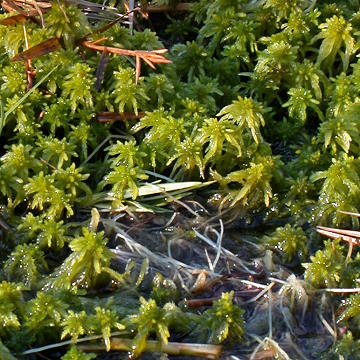

Sphagnum spp. - (image 1 of 7)
Taxonomy
Family: Sphagnaceae
Habitat
Wetlands, particularly acid bogs. Can also be found on hummocks in fens.
Associates
Distribution
Widespread. An important and dominant component of tundra. Several hundred species occur worldwide.
Morphology
Colonial mosses, with some forming deep hummocks from continual apical growth. Stems erect, mostly solitary; branches in fascicles spirally arranged around the stem, crowded at the tip of the stem to form a head-like tuft (capitulum). Branch leaves whorled, made up of linear, photosynthetic cells in a network of large, empty, hyaline cells. Sporophyte with a globose, dark brown or black capsule; spores tetrahedral, 18-42μm, forcefully discharged.
Notes
Sphagnum spp. are ecological engineers, capable of acidifying wetlands through the process of cation exchange. Sphagnum release hydrogen ions in exchange for dissolved cations; polygalacturonic acid in the cells walls provide for a high cation exchange capacity.
Species tend to segregate along environmental gradients, often at different heights above the water table (as on a hummock) or at different distances from a water source. Their distribution is also influenced by pH, mineral availability, and light intensity. Species that inhabit hummocks tend to have long, dense branches, shoots that fork, and a branching capitulum. Hollow inhabiting species tend to be shorter with few branches. The latter tend to have a higher dessication tolerance as an adaptation to the drying of hollows when the water table falls, while the former maintain moisture at the top of hummocks by wicking water from below.
These mosses are responsible for the formation of most of the peat (partially decomposed organic material) making up the sediment in acid bogs. Peat is an important source of fuel in some parts of the world. The use of peat for malting of barley is what lends the distinctive character to scotch.
References
Crum, H. 2004. Mosses of the Great Lakes Forest, 4th ed.
The University of Michigan Herbarium. Ann Arbor, MI
|
Michael Hough © 2009 |